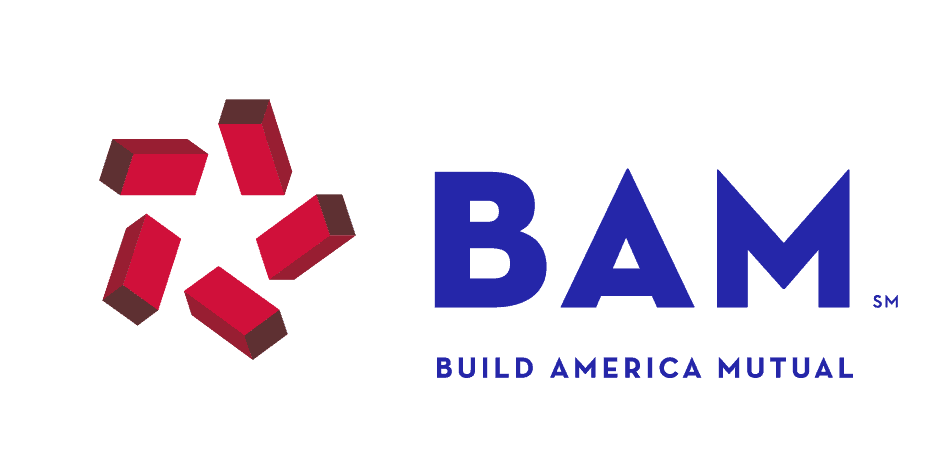Secondary Market – Frequently Asked Questions
Secondary Market Bond Insurance: BAM’s Answers to Frequently Asked Questions
BAM offers its insurance to guarantee timely payment of interest and principal on municipal bonds, providing protection against default and a downgrade of the issuer’s rating. BAM-insured bonds are rated AA with a Stable outlook by S&P Global Ratings. Purchasing secondary-market insurance can raise the rating on a municipal bond holding, enhance its liquidity, and potentially increase the value, both in the market and in third-party evaluations.
FAQs
-
What does BAM insurance cover?
BAM’s insurance is unconditional and irrevocable, and covers default for any reason, including, but not limited to:
- Economic disruption and recession
- Natural disasters
- Pension funding shortfalls
- Fraud and administrative errors
-
How do investors typically use municipal bond insurance?
Some common use cases for insurance include:
- Diversifying credit exposure – Investors with large positions in a single credit may choose to insure a portion of the holding in order to diversify their exposure and comply with portfolio concentration limits.
- Reduce ratings volatility – BAM-insured bonds are backed by our durable, AA rating and Stable outlook from S&P Global.
- Onboarding clients – separately managed account managers who are taking in existing municipal bond portfolios that may include credits that have not yet been reviewed or are not approved can consider adding insurance to bolster the credit, rather than requiring the account to sell the bond into a potentially illiquid market.
-
What bonds are most frequently insured in the secondary market?
Bond insurance is priced as a percentage of par outstanding, and the premium for secondary-market bond insurance is paid in full at the time of the trade. Investors often prefer to insure longer-dated bonds so that they can amortize this payment over a longer period and reduce the per-annum impact on yield. Common structures for secondary insurance include:
- Final maturity longer than 10 years
- Priced at a discount to par
- Noncallable and zero-coupon bonds
- Taxable municipals with a make-whole call provision
-
How is a secondary market trade executed?
There are 2 methods utilized to insure a bond in the secondary market:
- One option is for the Holder to “free deliver” the uninsured CUSIP directly to BAM’s custodian (either BNY or US Bank) and wire BAM the insurance premium. The Custodian will then deliver back the insured bond in the form of a Custodial Receipt with a new CUSIP.
- The second option is utilizing a broker: here the Holder sells the uninsured CUSIP to a broker with the understanding that the Holder will buy back the insured CUSIP at that price plus the insurance premium after the broker insures the bond. The broker will perform the same steps with BAM that are outlined below for the first method, a “free” delivery of the bond to BAM. The broker often charges a small commission to the Holder for this service. BAM only charges the bond insurance premium for both methods.
-
What are “matching” insured CUSIPs?
When an investor obtains secondary insurance on some, but not all of the bonds carrying a CUSIP, a new CUSIP is obtained for the custodial receipt. Any subsequent bonds from the original issue will then carry the same new CUSIP.
These follow-on secondary trades can have advantages for the investor, including a potential reduction in the fixed cost of the transaction because no additional CUSIP fees are necessary, and the ability to observe evaluated pricing levels for the insured bonds prior to the trade, which provides greater certainty about the post-trade value of the holding.
-
How does a secondary market insurance trade impact the holder’s cost basis?
BAM does not offer legal or tax advice and the Holder must make any ultimate determination, but typical market behavior is that the Holder adds the bond insurance premium to its amortized book price to determine its new cost basis.



